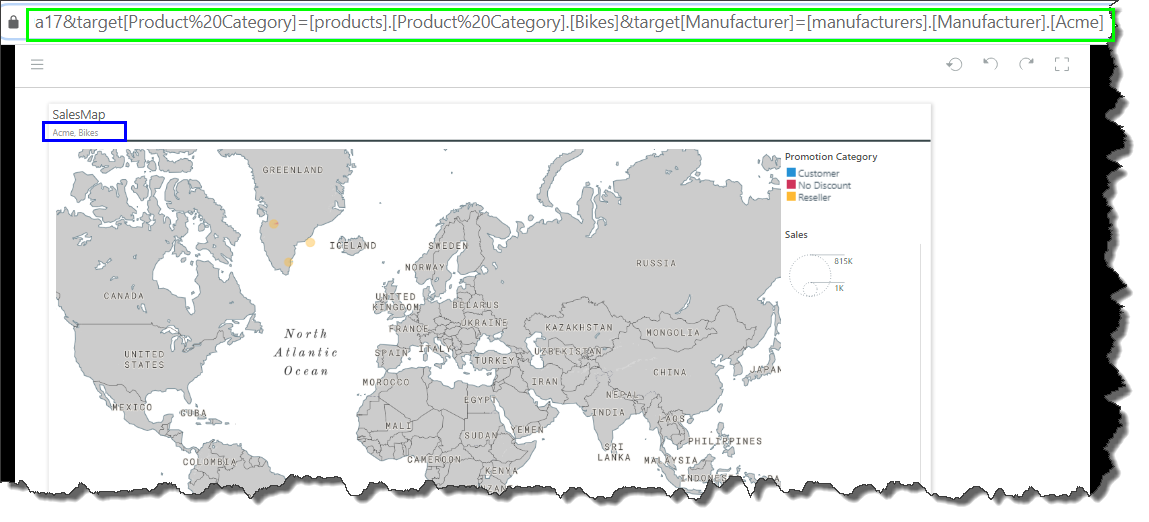Targets
Targets can also be used to pass values from external URLs; this is called target parameterization, and is an extension of direct URL loading and URL parameterization. This involves writing or copying the presentation's direct URL link, and adding to it the presentation's target(s) along with the member elements that should be loaded from the target interaction. These links can be shared with others, and depending on the presentation's runtime settings and the recipient's license type and profile, they can be a way to ensure that the recipient has access to the given data only.
Targets Panel
The Targets panel can be expanded from the left side of the interface (green highlight below):
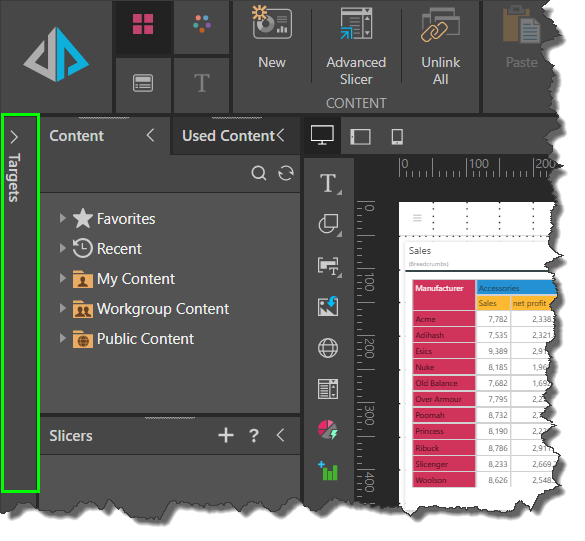
Once expanded, you'll see three options:
- Add: click the add sign (green arrow below) to add a new target.
- Dock: click the pushpin icon (yellow arrow) to pin the target panel.
- Collapse: click the collapse icon (blue arrow) to close the panel.
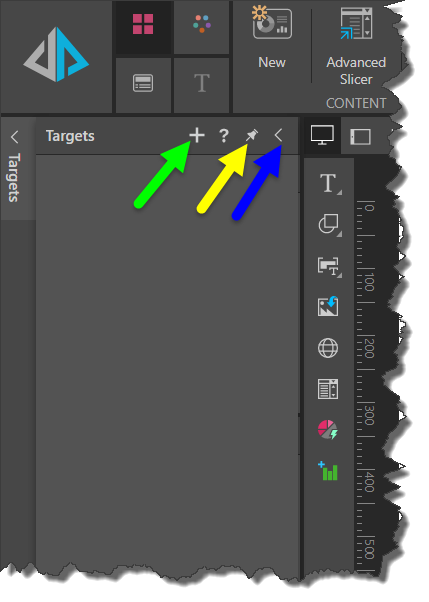
Once you pin the Targets panel it will be docked beside the Content panel. When you click the add icon, a new target will appear in the panel (green highlight below):

Right click on the target to rename it or delete it:

How to Configure Targets
Follow the steps below to configure targets.
Step 1
Add a new target.

Step 2
Add an interaction from the driver visual to the target. The driver visual is the visual whose elements will be used to filter the target visual.
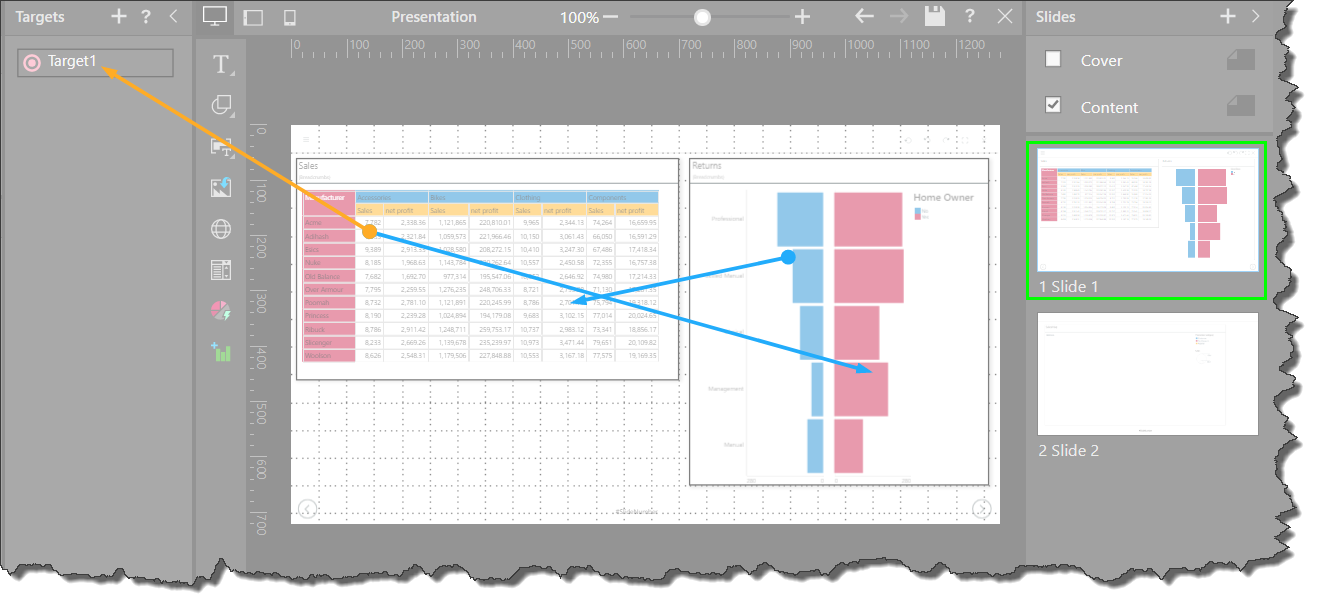
Step 3
Go to the slide containing the target visual. The target visual is the visual that will be filtered by the driver visual. Add an interaction from the target to the target visual.
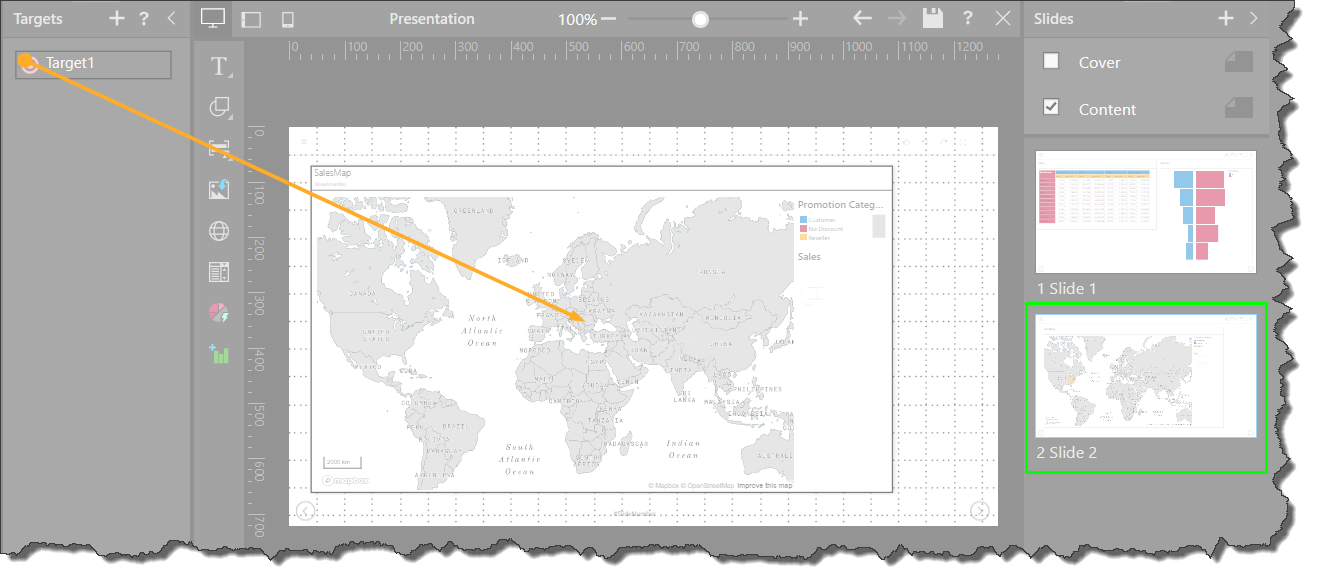
Step 4
Launch the presentation in runtime. Run a cross-interaction from the driver visual. In this example, the Bikes member element is used for the interaction.
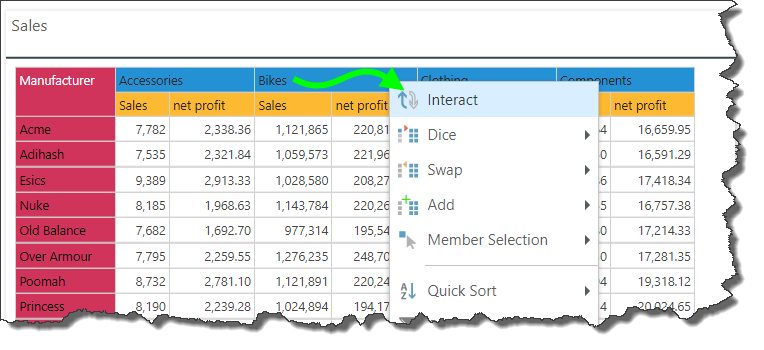
Step 5
Navigate to the slide containing the target visual; the breadcrumb trail will show that the visual has been filtered by the selection made at Step 4 (green highlight below).
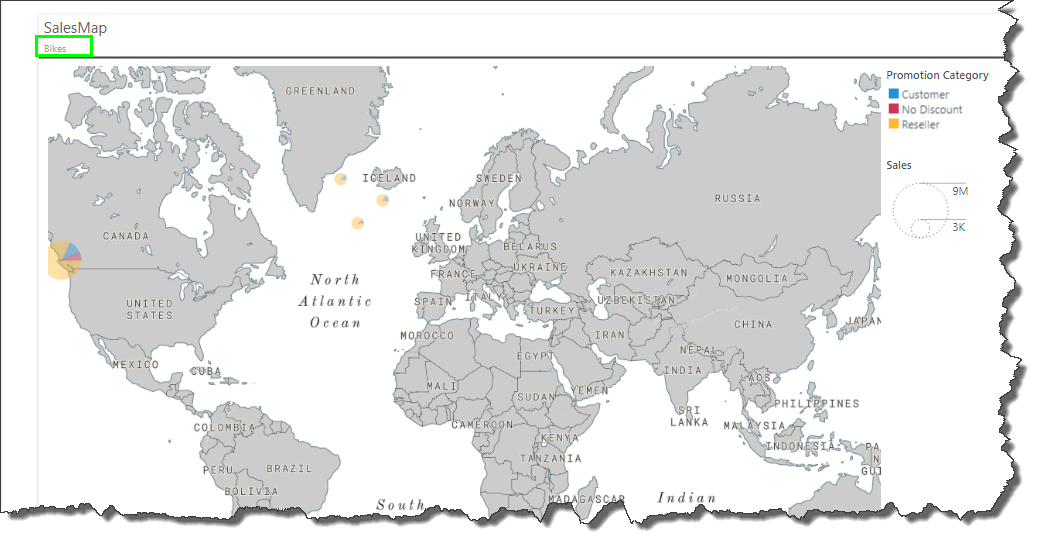
Target Parameterization
Target parameterization enables direct URL loading of the presentation, with filters applied via the target(s). When the URL is loaded into the browser, the presentation will be loaded, with the given target filters applied.
To parameterize targets, you need to get the presentations link and add the target name and elements by which to filter.
You can get the presentation link from the actions panel, or from the Present tab menu.
Target Parameterization Syntax
The syntax of the URL is as follows:
{YourPyramidsite}/direct/?id={content identifier}&target[Target Name]=[Dimension].[Hierarchy].[Member]:[Dimension].[Hierarchy].[Member]
The example below will filter the target visuals in the presentation according to the target called 'Country', by the member elements 'France' and Germany':
https://g2.pyramdanalytics.com/direct/?id=direct?id=134fd567-d6e3-4b8e-9484-b720d4e39a17&target[Country]=[customers].[Country].[France]:[customers].[country].[Germany]
Cube and BW Targets
If you are parameterizing a target that is interacting with a visual from an MS OLAP, Tabular, or BW data source, you need to add the appropriate flag to the URL after the target's name.
For OLAP or Tabular models, add the flag ":MS"; for BW models, add the flag ":BW".
MS OLAP/ Tabular
If the target connects to a visual from a cube model, add ":MS" after the target's name: "&target[Target1:MS]="
https://g2.pyramdanalytics.com/direct/?id=direct?id=134fd567-d6e3-4b8e-9484-b720d4e39a17&target[Target1:MS]=[customers].[Country].[France]
SAP BW
If the target connects to a visual from a BW model, add ":BW" after the target's name: "&target[Target1:BW]="
https://g2.pyramdanalytics.com/direct/?id=direct?id=134fd567-d6e3-4b8e-9484-b720d4e39a17&target[Target1:BW]=[customers].[Country].[France]
Multiple Targets
A separate target is required for each hierarchy that will be used to filter the target visual. However, multiple member elements can be used as a filter for each target, as long as each member element belongs to the same hierarchy.
In the example below, the target visual will be filtered by 2 targets: Product Category and Manufacturer. The target called 'Product Category' will be used to filter by the 'Bikes' element (from the Product Category hierarchy), while the target called 'Manufacturer' will be used to filter by the 'Acme' element (from the Manufacturer hierarchy).
https://g2.pyramdanalytics.com/direct/?id=direct?id=134fd567-d6e3-4b8e-9484-b720d4e39a17&target[Product Category]=[products].[Product Category].[Bikes]&target[Manufacturer]=[manufacturers].[Manufacturer].[Acme]
Here, an interaction was added from the grid on Slide 1 to the target called 'Product Category':

Next, an interaction was added from the target to the map on Slide 2:
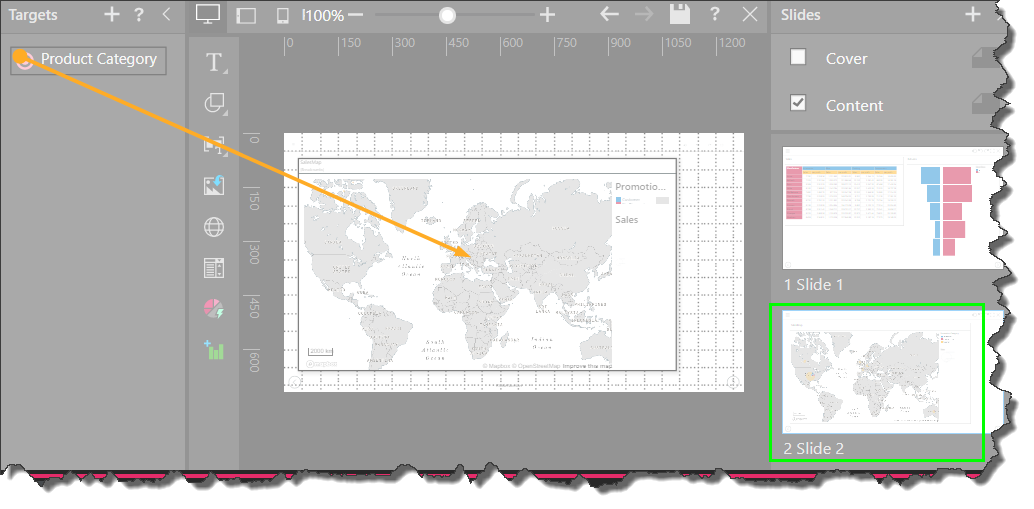
The following URL was entered, filtering the visual by the elements Bikes and Clothing (blue highlight below):
https://g2.pyramdanalytics.com/direct/?id=direct?id=134fd567-d6e3-4b8e-9484-b720d4e39a17&target[Target1]=[products].[Product Category].[Bikes]:[products].[Product Category].[Clothing]
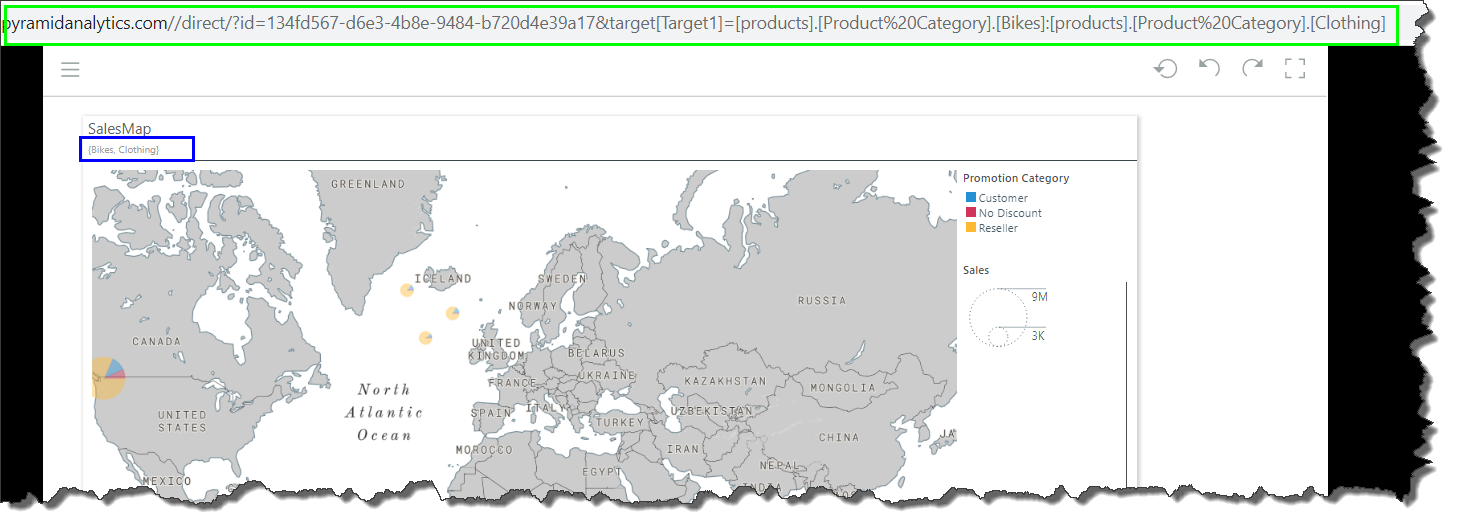
Here, 2 targets were added: Product Category and Manufacturer. An interaction was added from the grid on Slide 1 to each of the targets:
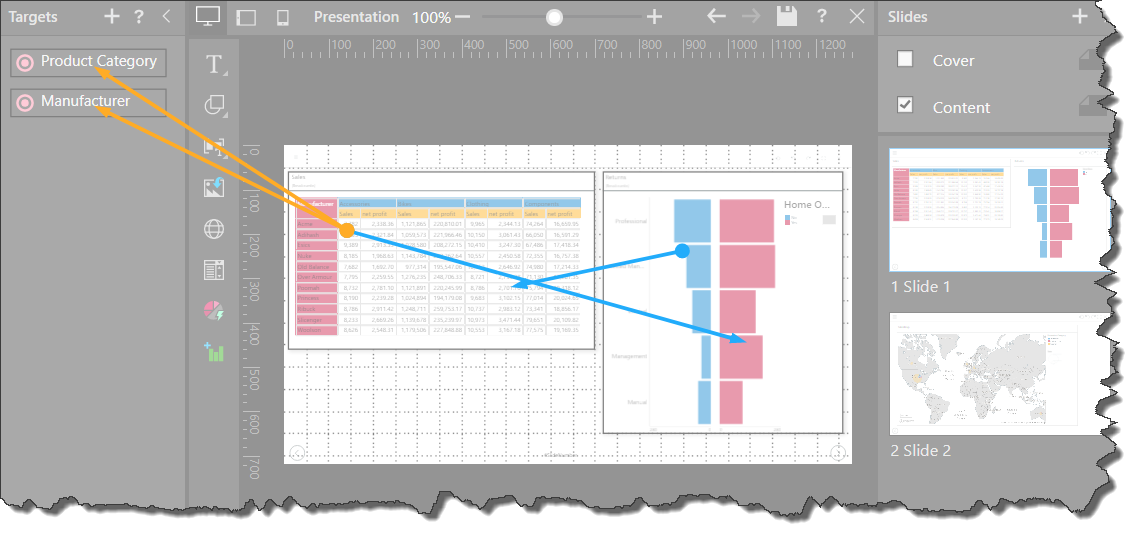
Next, an interaction was added from each target to the map on Slide 2:

The following URL was entered, filtering the visual by the elements the 'Acme' element from the Manufacturer hierarchy, and the 'Bikes' element from the Product Category hierarchy:
https://g2.pyramdanalytics.com/direct/?id=direct?id=134fd567-d6e3-4b8e-9484-b720d4e39a17&target[Product Category]=[products].[Product Category].[Bikes]&target[Manufacturer]=[manufacturers].[Manufacturer].[Acme]
